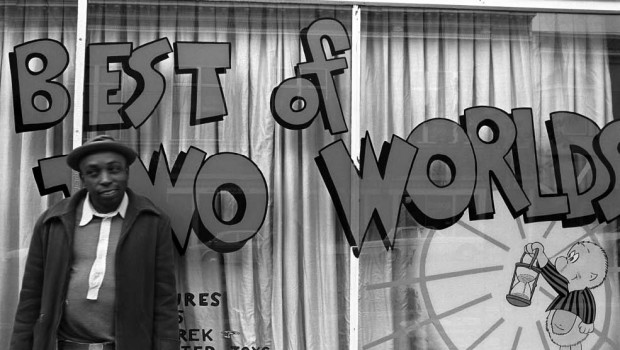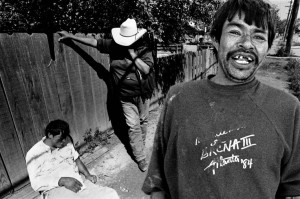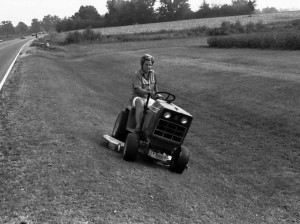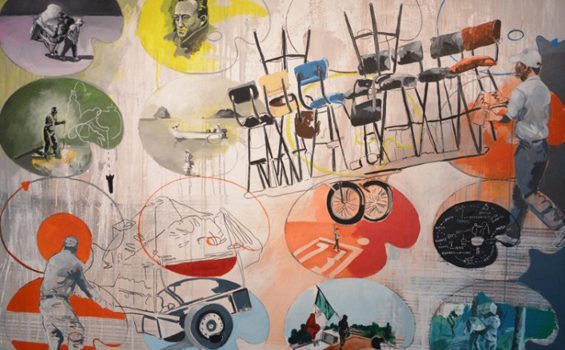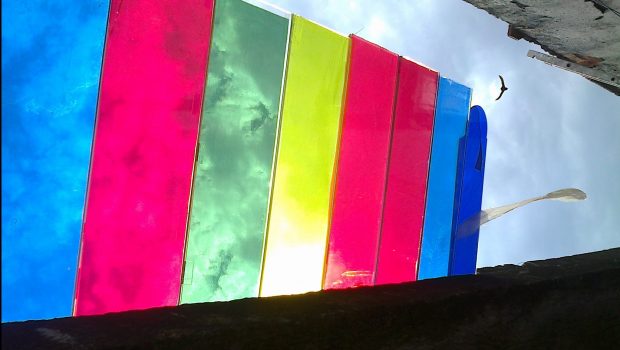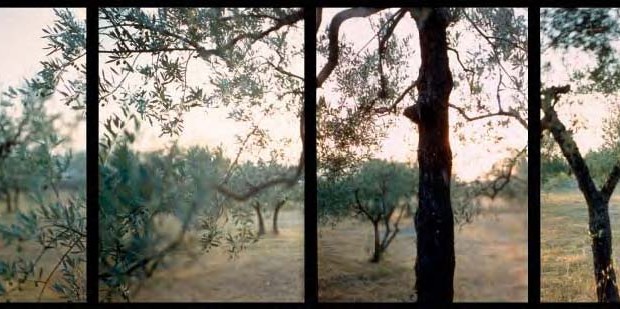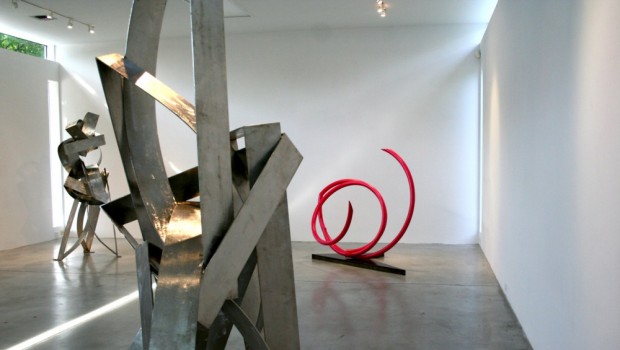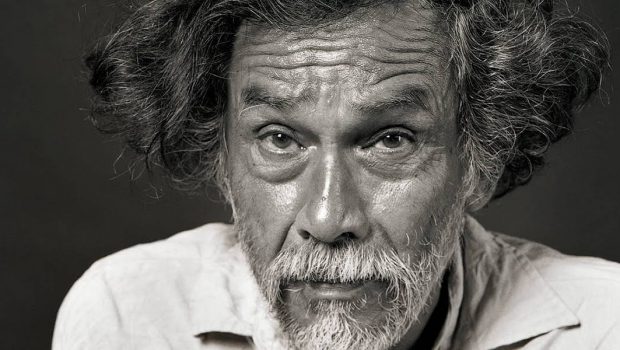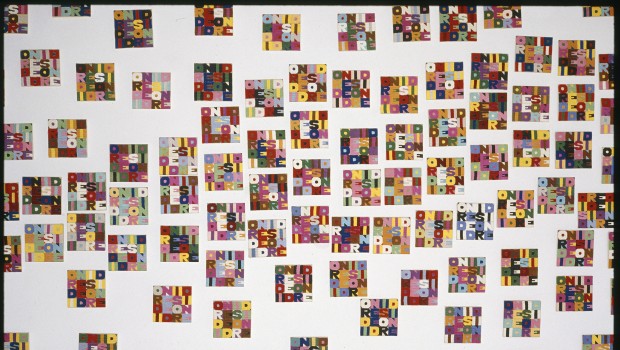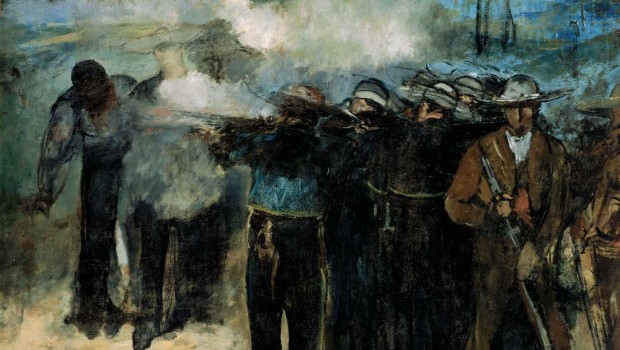Pedro Meyer: Street Photography
Fernando Castro R.
Pedro Meyer: Reverse Exoticism
Download Complete PDF / Descargar
Pedro Meyer’s contribution to photography is not only stricto sensu photographic. Meyer was the founder of the Consejo Mexicano de Fotografía, one of the main organizers of the Latin American Photography Colloquia, a world pioneer in digital media, and founder of zonezero.com–one of the most visited photography websites in the world wide web. However, Meyer’s legacy is also photographic. This brief essay focuses exclusively on his photographs of the United States of America. Meyer has lived in or visited the United States since the 1950s–from the time he attended Babson College to the present. Thus this body of work spans over half a century and encompasses nearly 55,000 images.
The majority of Pedro Meyer’s photographs of the United States fits in a genre usually associated with the work of French photographer Henri Cartier-Bresson (1908-2004) aptly misnamed “street-photography.” “Aptly,” because the name suggests that the photographer is on the chase–as if he were a hunter; and “misnamed” because–as the work of both Cartier-Bresson and Meyer shows–the subject matter need not be urban nor even outdoors. Another portion of Meyer’s work is better described as photojournalism or documentary photography. These three modes of photography are not clearly demarcated and in many cases overlap. Technically, street photography came to its own thanks to the availability of the 35 mm camera and most of Meyer’s analog photography was done in this format. Conceptually, street photography as practiced by Cartier-Bresson and his followers came to be concerned with “findings” of unusual objects or people, and fortuitous situations that reveal something more than the mere sum of those very same things. In a sense, the genre inherited the ambivalence with which Cartier-Bresson engaged it: somewhat in complicity with Surrealism, and largely, with photojournalism. Perhaps therein resides the difference between street photography and photojournalism and documentary photography, both of which aim (at least avowedly) to record exactly and not less or more. Meyer handles these modes of photography with a careful understanding of the medium and its history. When he photographs a Hassidic school in Los Angeles, he operates within a documentary mode with no additional agenda. However, his picture of a girl in Kansas jumping off a trampoline so that she seems to be walking on air aims also at the uncanny.
Ethically, street photography has often sought some kind of human involvement or solidarity–on behalf of the subjects of the images and/or of potential viewers. As such, it is also a photography that dwells on the social context in which the referent exists and less on its mere perceptual aspects such as texture or formal qualities. As is the case with Cartier-Bresson, Meyer’s photography is more gripping when the characters establish interesting connections with the context. That context may be the setting or background for the picture; or its current history–not always evident in the image. The old couples dancing in Miami photographed by Meyer are contextualized by the historical fact that they are Cuban exiles–and by the particular political pathos that fact implies. The backgrounds, on the other hand, are frequently choices of opportunity. The Grand Canyon is the background for an “All-American” family that looks at it from an unusual sightseeing window. When ironic, Meyer’s images tend to point out the incongruities in the social reality they depict; when compassionate, they appear to be endorsing the cause of the subject. A photograph Meyer took in San Francisco–where an African- American homeless man stands in front of a window that reads Best of Two Worlds–is both compassionate and ironic.
In spite of some purists who prefer them to be totally candid and spontaneous, historically, neither street-photography, photojournalism, nor documentary photography has precluded some degree of posing and/ or staging. How much of it and what it entails about a photograph is not something the image itself can often reveal (in spite of the optimistic assumption that images speak by themselves). Moreover, the answer belongs to the history of each particular image. When Meyer records the path of a homeless person from his sleeping “quarters” along his daily ambulatory route, it matters little for the purpose of the document whether at some point he prompted him to “hold” the pose.
A photographer alters a situation by merely being there–especially when it involves humans. Even when no humans are involved, what the photographer decides to place in front of the lens permanently hides what was next to it or behind it. Photographers have always had “editing powers” about the visual reality in front of them, from changing their vantage point to staging and choreographing the subjects, to cropping, burning, and blurring a print. Now, thanks to digital manipulation, the seamless hybridization of images with which Jerry Uelsmann once astounded us is now available to less patient people.
Pedro Meyer uses the tools of digital photography for photo-documentary purposes. Although this may sound heretical to purists, heresy is precisely the challenge that interests Meyer. Take his photograph of inebriated Native-Americans in a New Mexico reservation. The man on the foreground comes from one photographic “shot,” whereas the man lying down prostrate on the sidewalk and the one standing wearing a cowboy hat come from a different “shot.” Both “shots” were taken in the same place only seconds apart. Meyer reasons that bringing the two together digitally is not much different than having asked the three persons to stand together. According to Meyer, truth is not necessarily betrayed by his use of digital manipulation. If both images document independently, they ought to document jointly. Indeed, he argues that they do so more forcefully because together they narrate in a more succinct and compelling way the problem of alcoholism in Native-American reservations in the United States.
In the modern history of the depiction of The Other the rule has been for the depicters to be from dominant cultures and the depicted from a dominated culture. In the postmodern world in which Pedro Meyer has largely photographed this equation has not altogether vanished, but it needs to be reformulated in order for it to be more than a cliché with little or no explanatory power. Indeed, today globalization may have rendered cultures so homogeneous that–as Duke Ellington once put it–“nobody knows who is enjoying the shadow of whom.”
Notwithstanding the dissimilar historical contexts, the way Meyer depicts people in the United States bears some similarity to the manner in which 19th Century North-American and European explorers represented the indigenous peoples of the Americas; i.e., with a certain measure of exoticism. With anthropological curiosity, Meyer often focuses on social behaviors that are mostly possible (at least in its origins) in the United States, and which–if one were to clothe them as if they were part of some unfamiliar culture–could become the themes of museum tableaux. Imagine a tableau at the Smithsonian of the swimming suit competition of both female and male college students during spring break in Miami. Meyer photographed this contemporary ritual that brings forth the youth culture, the body worship, the pack mentality, the prevailing licentiousness, as well as the level of freedom and tolerance in the society that makes it possible.
One definition of “exoticism in art and literature” describes it as the representation of one culture for consumption by another unfamiliar with it. This definition brings up important features of exoticism, but fails to notice that the concept is neither a neutral nor symmetrical relation because it has been semantically contoured by political, economic and cultural power. Without that power a French explorer would be as exotic to an Amazonian native, as the latter is to the former. Though the Amazonian may have a way to conceptualize a stranger, he/she does not have the wherewithal to fathom the exotic because his/her culture lacks the power to establish the canon. In order to make the relation symmetrical the distance between both sides must be narrowed to diminish the effect of power. What makes it possible for Meyer to diminish that distance in order to render exotic a culture that put the term “exoticism” into use?
The intelligentsia of so-called “Third World” countries is dominated only if it is subservient to the dominating powers–not when it aspires to ideological autonomy and then appropriates and overcomes the conceptual tools of the dominator. Meyer’s biography reflects these prerequisites. Driven by the spirit of self-determination and equipped with an ever more educated and sophisticated understanding of the way the world works politically, ideologically, economically, culturally, and more recently ecologically, the Third World intelligentsia in the last four decades has narrowed the distance, challenged the mainstream, and consequently, rendered exotic some behaviors that have hitherto been regarded as canonical–for example, appropriating Classical art for cultural validation. Meyer photographs a Parthenon replica in Tennessee as the backdrop for a high school band, but suddenly a couple of dogs show up by chance and copulate before Athena’s temple. One can read this last photograph as an irreverent remark about a pagan temple right on the buckle of the Bible Belt, or as a commentary of the appropriation of Greek architecture for cultural validation (copulation with Classicism).
As an individual Meyer is uniquely situated to view and depict life in the United States as both familiar and exotic. He has a strong sense of self and although he was brought up in Mexico, his culture is also that of the European Jewish diaspora. He speaks English perfectly, he graduated from an American university, and he reached adulthood during a time when dissent was rampant and disagreement–even with those who shared similar views–was normal. For such a person, the United States, in addition to being a predictably familiar and admirable country (being worthy of imitation and/ or reproduction is not a feature of the exotic), it is also an extremely exotic country many of whose products or images (Elvis idolatry, Las Vegas make-believe, militarism, cowboy culture, etc.) are collectible curiosities–and that is a feature of the exotic.
Meyer’s attitudes–ironic, critical, curious, while at the same time reflective and compassionate–carries over to his work of the United States. When in Alabama, he photographed the prolific Caucasian working class family of a very obese man, his instinct was to get as close as possible in order to bring to out the affectionate side of the family members–not only their destitution. In Alabama, Meyer met Irene Malone, a plump older woman on a small tractor mowing the lawn along the freeway and around her house. For Latin Americans, this image is both exotic and ironic because a landowner in Latin America would simply not be doing that job. As he photographed her, Meyer engaged her in a dialogue. Meyer’s images are more forceful when the subject is so fresh, intimate, peculiar, or improbable that it defies the viewer’s knowledge or expectations.
As one scrutinizes Meyer’s archives, it is clear that what mostly interests him is to give us glimpses of the human condition from a country with which he has been acquainted since the early years of the Civil Rights movement, the Vietnam War, the lunar landing, the sexual and psychedelic revolutions, the feminist movement, the Gay Liberation movement, the age of consumerism, 9/11, the immigration debates, and the advent of the computer way of life. It is photographing the good, bad and ugly by-products of that great society that Meyer feels at home.
Posted: May 22, 2012 at 12:26 am


